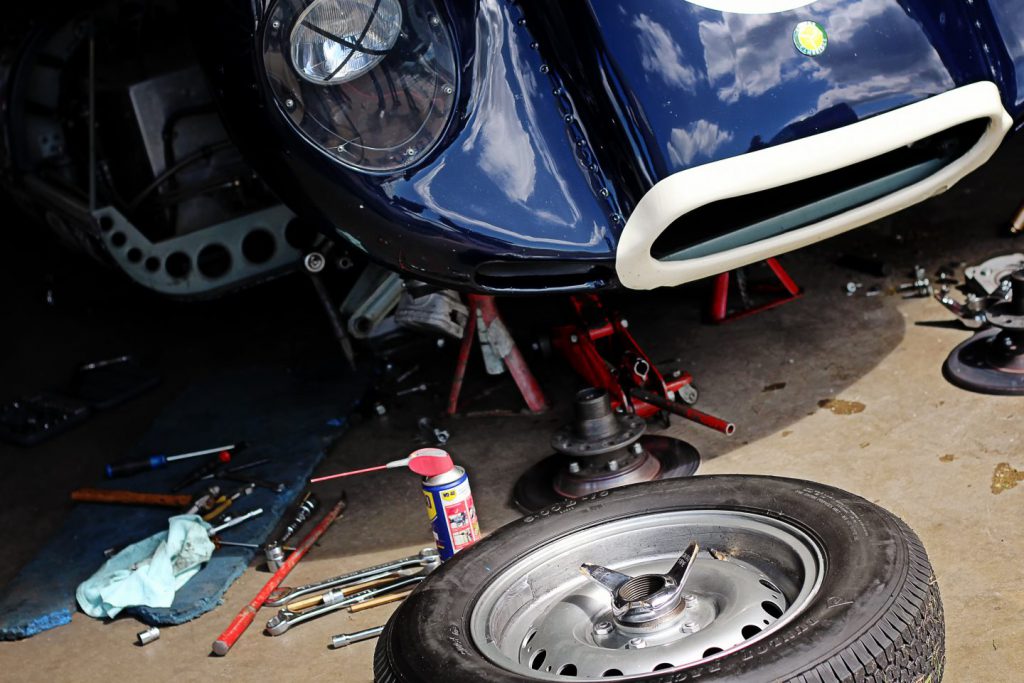
We would all love to use our competition cars all year around, but the lengths of championships, as well as budget and family pressures mean this rarely happens, meaning you’ll have to put your race car in storage some point. In this blog we will guide you through everything you need to know so you can safely put your car away and what maintenance you can do easily to keep your car in top shape.
It would be lovely if you could just put the car away and then bring it out the next season ready to go, with nothing left to do. Unfortunately, there are many things that can deteriorate when the car is put into storage. The steps below will lessen any issues after hibernation.
To sum up, you should consider the following:
- Cleaning – Thoroughly clean and dry
- Metalwork – Paint, plate or powder any exposed metal
- Engine and gearbox – Check all fluid levels and replace. Change oil and filters
- Battery – Keep charged and disconnect
- Brakes – Inspect and replace if needed, leave handbrake off
- Safety equipment – Check expiry date and replace if needed
- Tyres – Check for damage and repair if needed
- Storage – Make sure its clean, dry and secured properly
- Security – Locks, sensors and sprays are a must
There is plenty more to go into for each area, continue reading to find out…
Cleaning
The first step is to give the car a thorough clean and degrease, followed by a thorough drying; a warm dry day with a bit of a breeze is ideal. A clean car means that any issues will show up much easier, many of which will be spotted during a thorough clean. A hand wash is preferable for this reason. A good bodywork wax will keep the paint protected. Other materials such as leather can be protected with an appropriate polish or cleaner.
The engine bay should be cleaned with a good degreaser, and this will highlight any leaks that require attention. A gentle wash off with a hosepipe is better than a power washer, as these can force water where it should not go and mean it will take much longer to dry off.
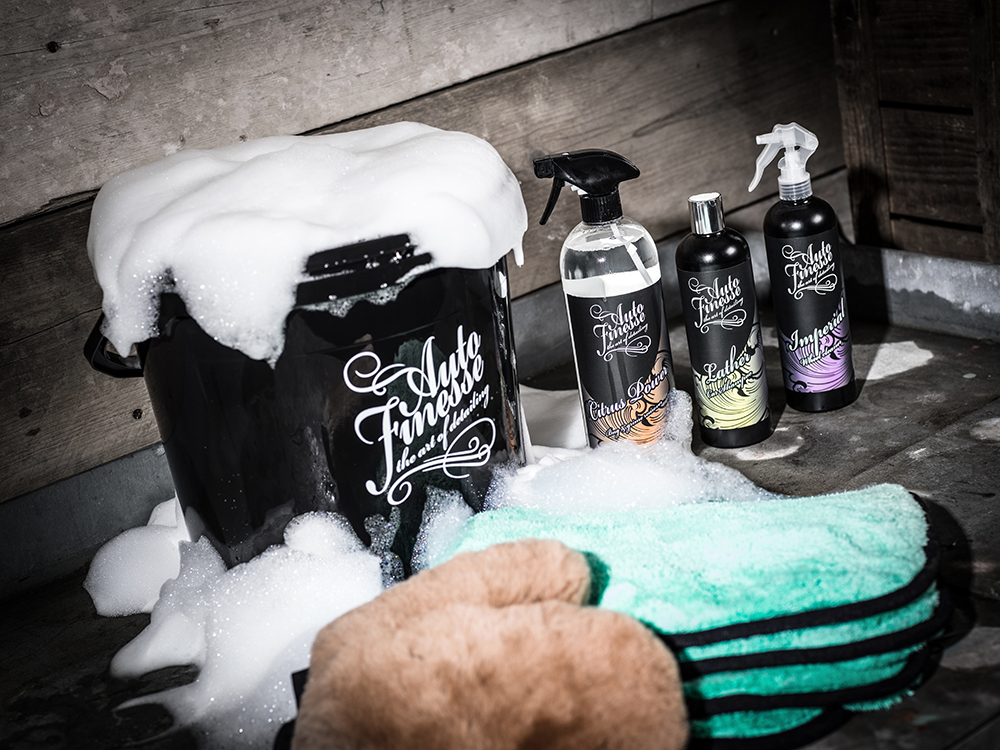
Metalwork
Before placing your vehicle in storage, look for any exposed steel or alloy as this can corrode the car if exposed to air and moisture, and this will be worse if the car storage space is damp. Any exposed steel that is typically painted, plated, or powder-coated should be refinished to protect it during storage. Ensure that the finish is in good condition, and touch up any areas where it may have chipped or worn away. This will act as a barrier against moisture and air, preventing corrosion.
For metal finishes such as chrome or nickel plating, it’s essential to provide an extra layer of protection. Apply a corrosion protection spray or a good quality metal polish to the plated surfaces. This will create a protective barrier and help maintain the shine and integrity of the metalwork.
If possible, choose a storage space that is dry and well-ventilated. Reducing humidity and controlling the environment will go a long way in preventing corrosion.
During the storage period, periodically check the condition of the metalwork. Address any issues immediately to prevent corrosion from spreading. Consider using a corrosion inhibitor product. These products are designed to protect metal surfaces from moisture and oxidation. They can be applied to exposed metal areas for added protection.
Engine & Gearbox
To ensure the engine and gearbox of your race car remain in optimal condition during storage, follow these steps:
Engine:
- Change Oil and Filter: Start by changing the engine oil and filter. Use a high-quality oil designed for race car engines. Fresh oil will cling better to engine components and prevent harmful contaminants from festering in the engine.
- Run the Engine: After changing the oil, start the engine and let it run for a few minutes to ensure the fresh oil circulates through all engine components.
- Fuel System: There are two approaches to the fuel system. You can either drain it to prevent damage from additives like ethanol, or you can fill it with fresh fuel and add a fuel stabilizer. If you choose to fill it, make sure the fuel system is sealed to prevent air and moisture from causing corrosion.
- Cooling System: Check the strength of the antifreeze. If the car will be stored in a cold area, ensure the antifreeze is of the appropriate strength. Antifreeze not only prevents freezing but also guards against system corrosion. Consider using a waterless coolant for additional protection.
- Periodic Engine Runs: If possible, periodically run the engine up to temperature every few weeks during the storage period. This will help circulate the oil and protect engine components.
Gearbox and Differential:
- Change Gearbox Oil: Just like the engine, change the gearbox oil before storage. Make sure to use high-quality oil designed for gearboxes.
- Run Gears: After changing the oil, shift through all gears to ensure that the new oil clings to each gear. If your race car has a separate differential, change its oil as well.
General Tips:
- Oil Drip Tray: If your race car is older or not very oil-tight, consider placing it over a drip tray or oil drainer. This will prevent oil leaks from creating a mess and help with easy cleanup.
- Add Fuel Stabilizer: If you choose to fill the fuel system, make sure to add a fuel stabilizer to protect all susceptible parts.
By following these steps, you’ll ensure that your race car’s engine, gearbox, and associated systems are well-prepared for storage, minimizing the risk of damage or corrosion. When it’s time to hit the track again, your race car will be ready to perform at its best.
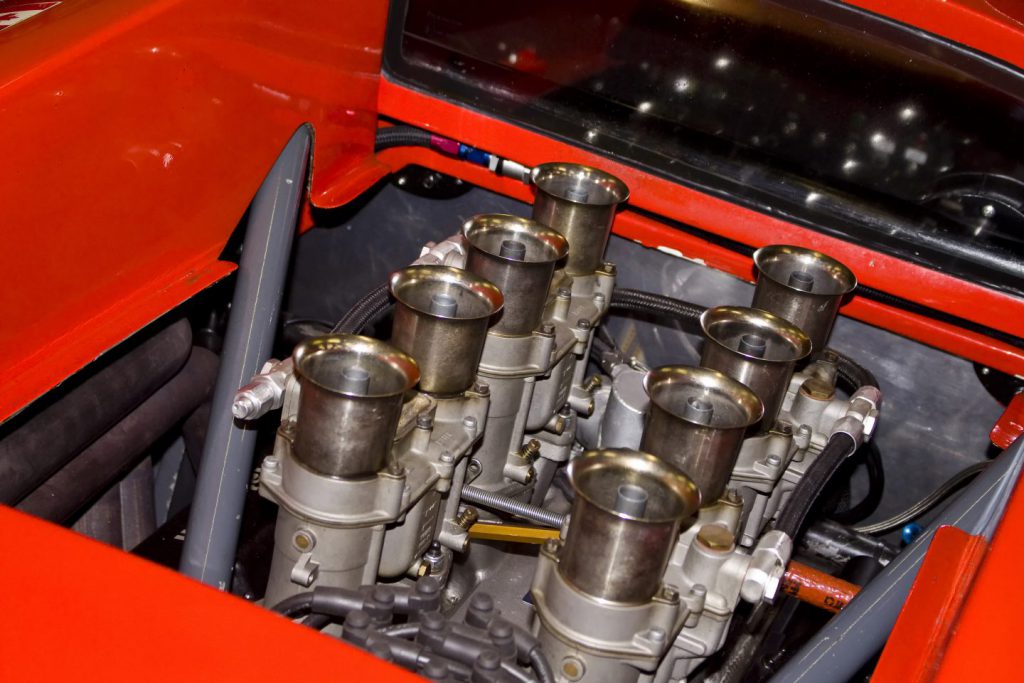
Battery
Taking proper care of a race car battery when putting it into storage is essential to ensure it remains in good condition and ready to power your vehicle when it’s time to hit the track again. Here are the steps to follow:
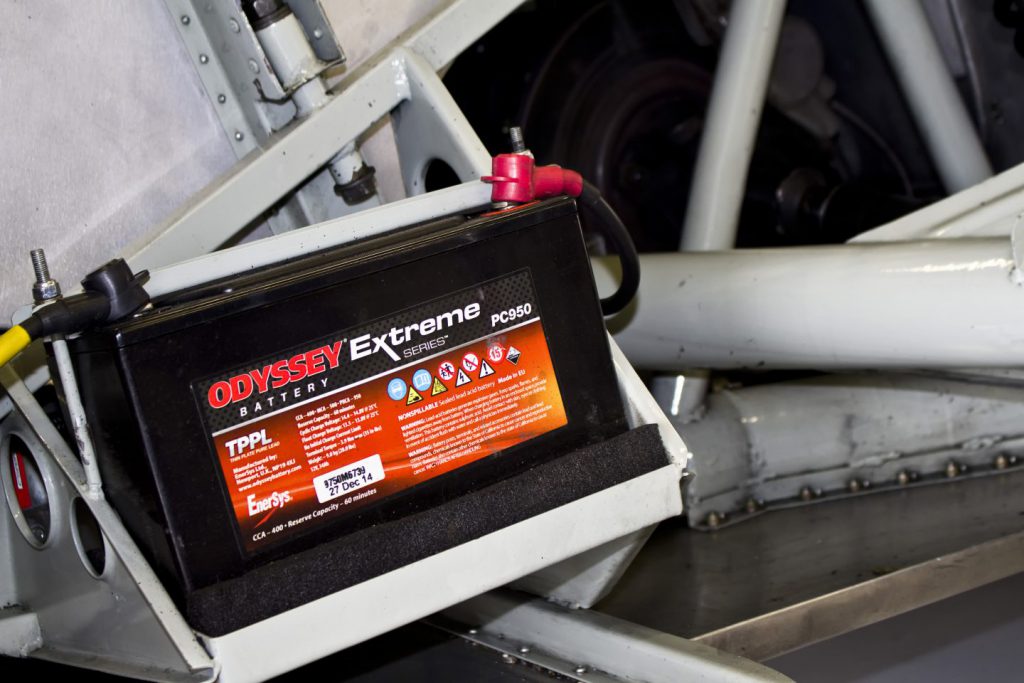
- Fully Charge the Battery: Before storing your race car, make sure the battery is fully charged. A fully charged battery is less likely to freeze and is more likely to maintain its charge over an extended period.
- Disconnect the Battery: To prevent any current drain during storage, it’s a good idea to completely disconnect the battery from the car’s electrical system. This will ensure that no electrical components draw power from the battery while the car is not in use.
- Isolate the Battery: A typical race car battery has a low internal resistance, which means it can stay charged for a long time if properly isolated. Disconnect both the positive and negative terminals of the battery to ensure complete isolation.
- Consider a Battery Conditioner: Using a high-quality battery conditioner is a wise investment. It not only keeps the battery fully charged but also maintains the charge level during the storage period. Some budget systems may not provide a complete charge, so investing in a reliable conditioner is recommended.
- Regularly Check Battery Voltage: During the storage period, periodically check the battery voltage to ensure it is being maintained correctly. This is important because some inexpensive battery conditioners may not fully charge the battery, which can lead to sulfate buildup over time. Sulfation can reduce the battery’s capacity and lifespan.
- Store in a Cool, Dry Location: Store the race car in a cool, dry environment, as extreme temperatures can affect the battery’s performance and lifespan. Avoid leaving the battery in direct sunlight or in a freezing cold space.
- Keep the Battery Clean: Ensure the battery is clean and free from corrosion. Clean the battery terminals and cable ends, and apply a small amount of dielectric grease to prevent corrosion.
By following these steps, you can help ensure that your race car’s battery remains in excellent condition during storage. When it’s time to get back on the track, your fully charged and well-maintained battery will be ready to power your vehicle.
Brakes
When preparing to put a race car into storage, taking care of the brakes is of paramount importance. To ensure that your race car’s brakes remain in top-notch condition for the next time you hit the track, follow these essential steps:
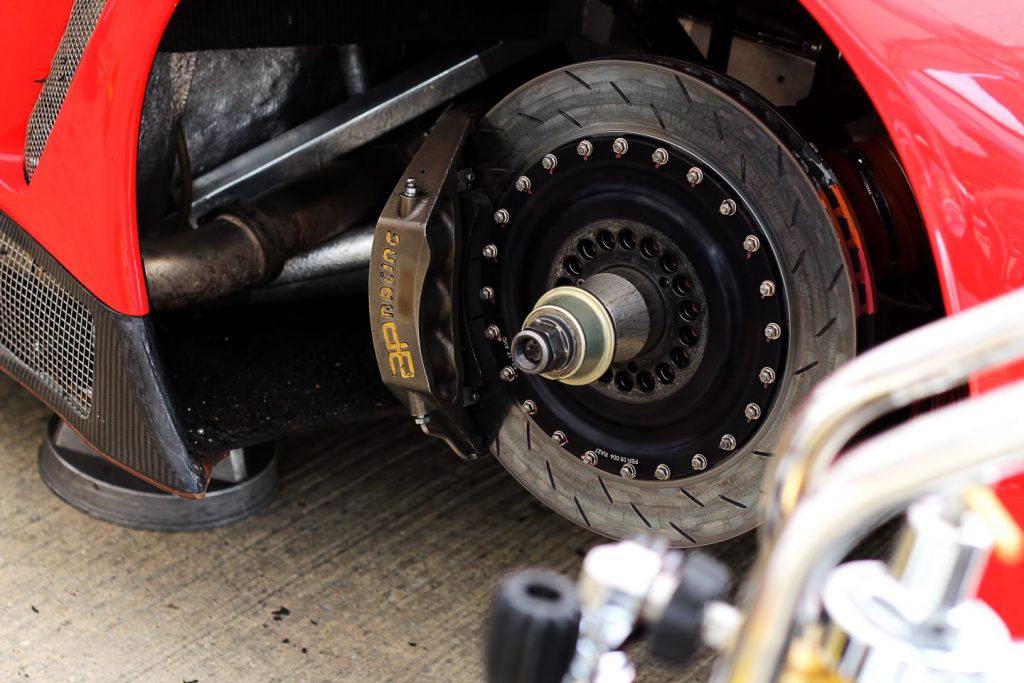
- Release the Handbrake: If your race car is equipped with a handbrake, leave it in the disengaged position. Keeping the handbrake engaged for an extended period can cause the friction material to stick to the disc or drum, potentially leading to corrosion and difficulties when you try to move the vehicle again.
- Inspect Brake Components: Before storage, perform a comprehensive inspection of the brake system. Examine the brake pads, shoes, and brake lines for signs of wear, damage, or deterioration. Any components showing excessive wear or damage should be replaced before storage.
- Replace Brake Fluid: Changing the brake fluid is a crucial step to prevent internal corrosion. Brake fluid can absorb moisture over time, which can negatively impact the brake system’s performance. Replacing the brake fluid will help maintain the integrity of your brake system. Use a high-quality brake fluid that is compatible with your race car’s specifications.
- Protect the Callipers: To safeguard the callipers from moisture and corrosion during storage, consider applying a thin layer of brake calliper grease to the calliper guide pins. This will help ensure that the moving parts remain in good condition.
- Elevate the Car: If possible, elevate the race car off the ground using jack stands. This not only prevents the tires from developing flat spots but also reduces stress on the brake components.
- Monitor Tire Pressure: Check the tire pressure and maintain it at the recommended level. Improper tire pressure can lead to flat spots on the tires, affecting their performance.
- Regular Inspection: Periodically check the brakes during the storage period to ensure that there is no corrosion or damage. Remove the protective substances from the brakes before driving the car again.
By following these brake-specific steps, you can rest assured that your race car’s brake system will remain in excellent condition while it’s in storage. When you’re ready to bring your car back on the track, you can do so with confidence in its braking performance.
Safety Equipment
The condition and expiry date of the harnesses should be checked and replaced if necessary. Harnesses are normally easy to remove, so they can be stored separately if the storage area is damp. The fire extinguisher cable or electrics are worth disconnecting or disabling and the service date checked. It’s best to have these serviced in the quiet period rather than three days before the first meeting!
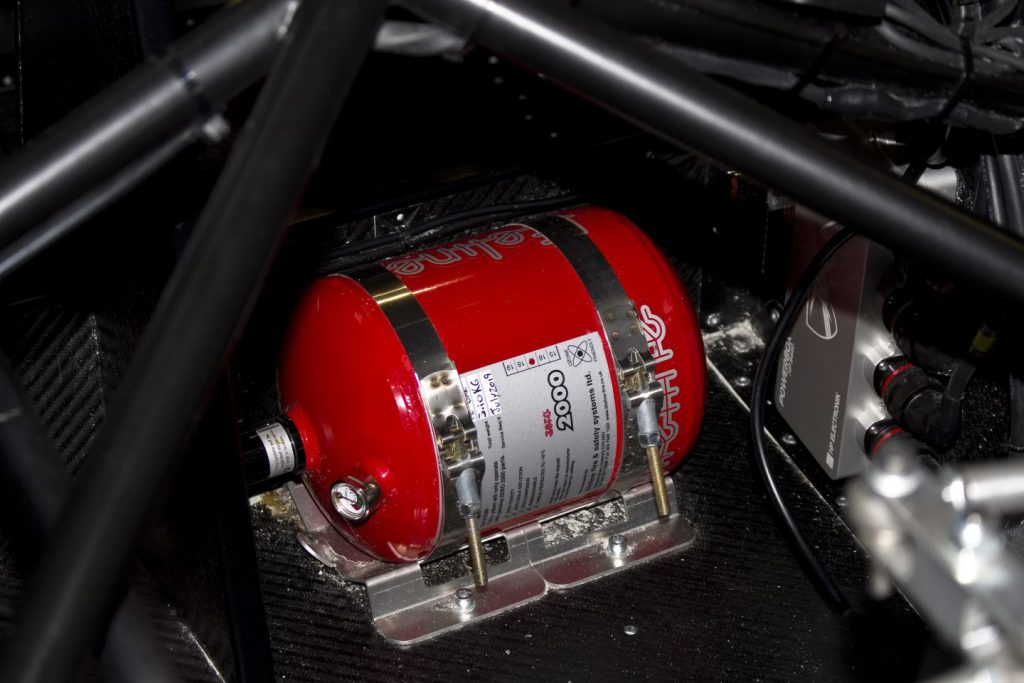
The seat or seats should be checked for any damage and the material cleaned if necessary. The dates should also be checked if applicable. The electrical cut out wiring should be checked to make sure that there are no breaks in the insulation and that the wires are not loose. It is a good idea to cut out the electrics for storage to stop any current draw, and this doubles as a security measure if the key is removable.
Tyres
Proper tire maintenance when putting a race car into storage is essential to ensure that the tires remain in good condition and perform optimally when you’re ready to hit the track again. Building on the provided information, here are the steps you should take:
- Inspect Wheels, Tires, and Bearings: Begin by thoroughly inspecting the wheels, tires, and bearings for any signs of damage or wear. If you notice any issues, replace them as necessary. Check for any punctures, sidewall damage, or uneven wear on the tires.
- Order Competition Tires Off-Season: As mentioned, competition tyres are often more readily available during the off-season. It’s a wise strategy to order any needed tires during this time rather than waiting until the pre-season rush.
- Inflate to Normal Pressures: Properly inflate the tires to their normal recommended pressures. Under-inflated or over-inflated tires can develop flat spots during storage, affecting their performance.
- Use Tire Flat Stoppers: To prevent tires from going out of shape during storage, lift the vehicle off the ground or use tire flat stoppers. These devices help distribute the weight evenly across the tire, maintaining its shape and integrity.
- Protect from Direct Sunlight: If your race car will be stored in an area with direct sunlight, it’s a good policy to cover or remove the tires. Prolonged exposure to sunlight can cause rubber degradation. Store the tires in a dark, dry area to prevent this.
- Rotate the Tires: If you anticipate a long storage period, consider periodically rotating the tires to prevent flat spots. Rotate the tires every few weeks to ensure even wear.
- Maintain Tire Cleanliness: Ensure the tires are clean and free from contaminants like oil, brake fluid, or any other substances that could degrade the rubber.
- Check Tire Condition Regularly: During the storage period, periodically check the condition of the tires, especially if they are exposed to temperature and humidity fluctuations. Address any issues immediately to prevent tire degradation.
By following these steps, you can help ensure that your race car’s tires are ready to deliver the performance you expect when you’re back on the track. Proper tire care during storage will prolong their lifespan and maintain their grip and durability.
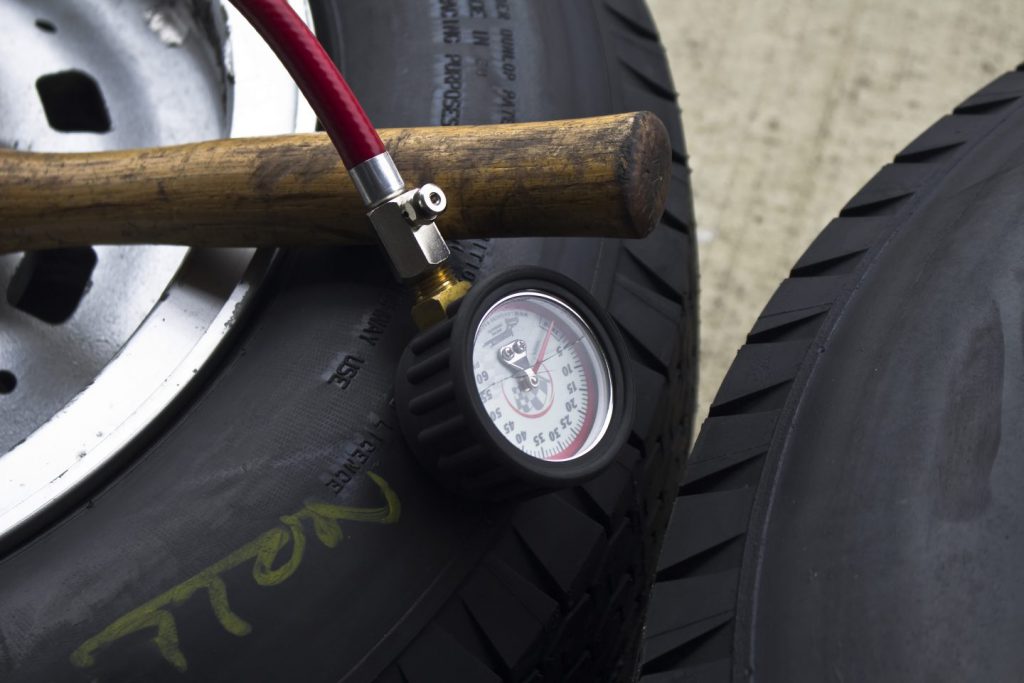
Storage
The most important requirement is that the race car storage area is as dry as possible. If this is not achievable then good airflow will help, either by careful ventilation or enclosing the car in its own dry ventilated enclosure. This can be an indoor storage solution or outdoor car storage enclosure. A dehumidifier can also help but care must be exercised not to dry things too much; rubber seals, leather seats and anything made of vinyl or soft plastic can become brittle and crack, as well as anything made with wood, such as veneer dashboards, which can warp and crack.

A good car shelter will dry out a wet car and you can help keep it dry by constant monitoring. The storage floor should ideally be concrete, preferably painted, or with floor tiles to stop moisture corroding the underside. If the floor is earth or damp, putting down a tarpaulin or ground sheet is a good policy. This also makes accessing the underneath of the car much easier. Axle or chassis stands are useful to allow safe working on the car and improving airflow underneath. If you decide to use a cover, make sure it is breathable and not too tight fitting, otherwise it can stop air flowing. Access to safe electrical power is useful for battery conditioners, car lighting or car enclosures. This is particularly useful if you wish to work on the car while stored.
Security
Security is, of course, another important consideration. A good security locks are invaluable and making any attempted entry noisy and time consuming will help to put off the opportunist. A good outside light with a PIR sensor will also help stop undesirables doing their worst in darkness. If the garage has windows covering these with curtains or using reflective film can stop any unwelcome attention. A garage alarm is a great idea as thieves do not like noise alerting people to their presence.
If the car is being stored with the wheels off, it is a good idea to store these out of sight or, even better, elsewhere. A car without wheels is unlikely to go far, especially if the steering wheel is removed as well. Thought should be given to those tiny four-legged critters that can chew on wiring, plastics, trim, seats, brake and fuel line and also make cosy nests in your induction system. If this has been an issue for you before, traps or preventative sprays can help.
Conclusion
In summary, thoughtful race car storage will keep it ready to use and allow it to hold value, with the added benefit that there will be much less to do next season. Hopefully this gives you a good idea of how to store your competition car during the off-season, but if you have any vehicle storage tips and observations of your own, we’d be only too happy to hear them!
Enjoyed this? Read more of our latest news:
- How to Choose and Maintain a Motorsport Battery
- Why Was The Super Touring Car Era So Iconic
- How To Eliminate Window Fogging: Pitking Clear View Window Film
Where To Next?
Looking for the latest motorsport parts and accessories? Check out our wide range from top brands.
Come and visit us at our store, showroom and fitting centre in Wrexham.
Want to know more about our story? Learn about who we are and why we’ve been driven by passion for over 50 years.
Interested in everything we do? Catch up on all the latest Demon Tweeks news.
